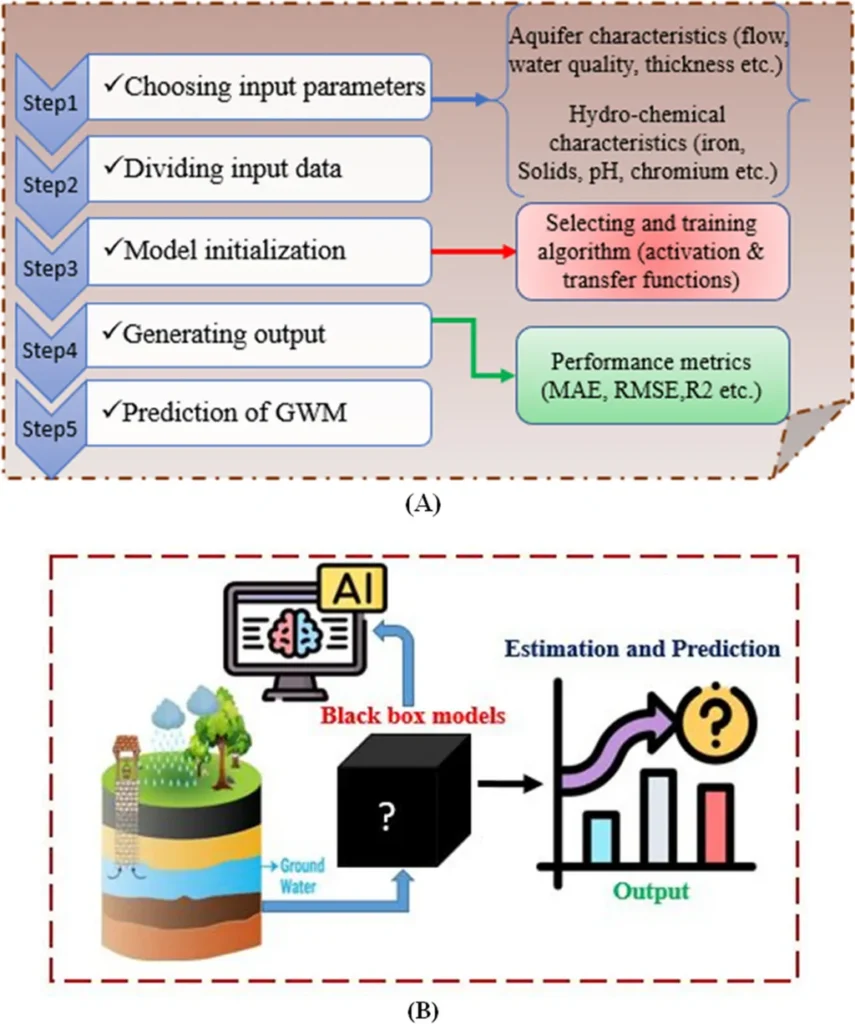In the heart of India, where the demand for water is surging due to domestic, agricultural, and urban expansion, a groundbreaking study is offering a lifeline to sustainable water management. Prashant Parasar, a researcher from the Department of Remote Sensing at Birla Institute of Technology in Ranchi, Jharkhand, has developed an innovative framework that could revolutionize how we approach groundwater management, particularly in hard-rock aquifers.
Parasar’s research, published in the Journal of Hydrology: Regional Studies (translated as “Regional Hydrological Studies”), focuses on Jharkhand’s fractured hard-rock aquifers, which are currently under severe threat from overexploitation. The study integrates genetic algorithms and machine learning to map groundwater potential zones, providing a robust tool for decision-makers in the energy and water sectors.
The framework combines Genetic Algorithm (GA)-optimized clustering, Random Forest (RF) regression, and Gradient Boosting (GB) classification. This integration allows for the creation of detailed maps that identify areas with high, medium, and low groundwater potential. “This approach not only enhances the accuracy of groundwater potential zoning but also provides a clear understanding of the factors influencing groundwater availability,” Parasar explains.
One of the standout features of this research is its use of Local Interpretable Model-Agnostic Explanations (LIME) to boost model interpretability. This means that the findings are not just accurate but also transparent, a crucial aspect for stakeholders in the energy sector who rely on data-driven decisions.
The study’s findings are significant. It identified three distinct groundwater potential zones, with high-potential areas concentrated in West Singhbhum, East Singhbhum, and Gumla, while Giridih, Pakur, and Garhwa exhibited low potential with aquifer depletion. “The framework’s ability to predict groundwater depth at unmonitored sites and assess temporal trends is a game-changer,” says Parasar. “It provides a comprehensive picture of the groundwater scenario, which is essential for sustainable management.”
The implications for the energy sector are profound. Accurate groundwater potential zoning can guide the development of sustainable energy projects, such as geothermal energy, which relies heavily on groundwater. Moreover, it can inform policies aimed at conserving water resources, ensuring that energy projects do not exacerbate water scarcity.
Parasar’s research also demonstrates the transferability of the framework to other hard-rock and data-scarce aquifers, such as the Brazilian Shield and African cratons. This means that the benefits of this study are not limited to Jharkhand but can be extended to other regions facing similar challenges.
As we look to the future, this research paves the way for more sophisticated and sustainable approaches to groundwater management. It underscores the importance of integrating advanced technologies like genetic algorithms and machine learning in addressing real-world problems. “This is just the beginning,” Parasar notes. “The potential for further refinement and application of this framework is immense.”
In conclusion, Parasar’s work is a testament to the power of interdisciplinary research. By combining remote sensing, hydrogeology, and machine learning, he has developed a tool that could shape the future of water and energy management. As the world grapples with the challenges of climate change and resource depletion, such innovations offer hope and a path forward.

